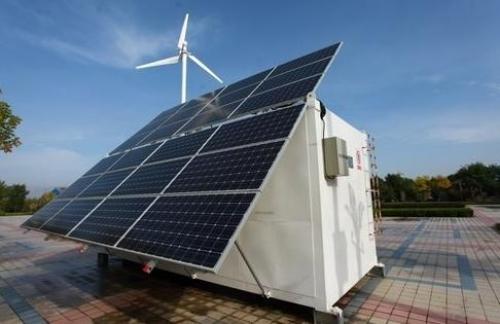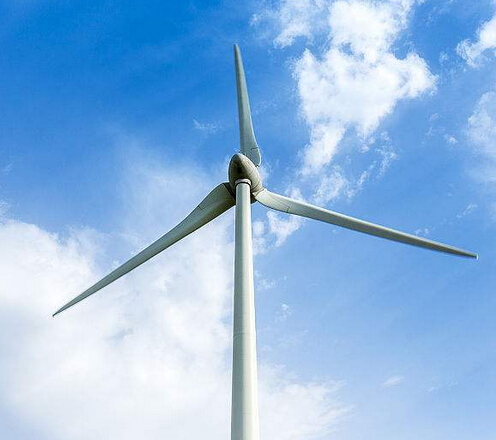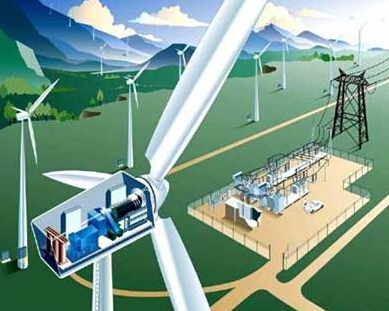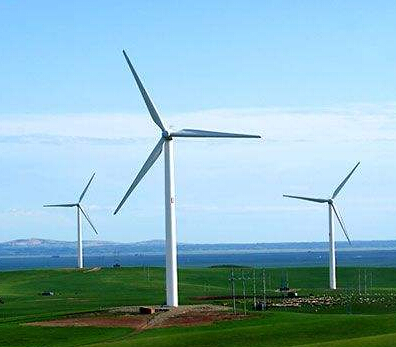Low-cost energy storage will change the pattern of the entire power industry. This fact will have a far-reaching impact on the future society and the capital market. As the demand for consumer electronics markets and electric vehicles (EVs) continues to grow, the price of energy storage batteries is falling faster than any expectation. Asia, Europe and the United States are major manufacturers to electric vehicles and other power applications to expand the capacity of lithium batteries.
For many business customers, it is economically viable to reduce their peak demand for electricity through energy storage equipment. In today's lower electricity prices, energy storage began to play a broader role in the energy market and from the grid balance niche market into a wider range of applications, such as replacing traditional generators to improve power supply reliability and stability, Support for renewable energy and grid integration.
In addition, in view of the many changes in incentives for solar energy subsidies in many markets, the combination of solar power and energy storage, enabling home users to store and use the electricity produced by their own needs, which will be very attractive to users (also known as For some off-grid). We believe that the energy storage market will continue to grow, and this is now facing weak growth in customer demand or even decline in the phenomenon of electricity sales company has brought great challenges. Ultimately, combined with solar power generation and energy storage plus a small generator (also known as completely off-grid), in the next few years, you can for high-cost market, some of the customers bring economic benefits.
With the development of industry trends, how we will energy storage will change the power grid and the operation of the electricity market, the way users consume and produce electricity, as well as the role of power companies and third parties. Our analysis is mainly for the development of Europe and the United States; energy changes may also be in other markets through different ways to show it.
Impact on power companies
Energy storage equipment can be deployed in the grid and in individual homes or in commercial facilities. It is a complex technology whose economic suitability is determined by factors such as customer type, location, grid requirements, regulations, user load curve, rate structure and application nature. Energy storage batteries have the unique flexibility to stack different value chains or change their flush modes to meet different user needs. Energy storage business chain in the value and market size are growing.

The Economic Value and Development Trend of Battery Energy Storage under Different Application
Inexpensive battery energy storage equipment will pose a challenge to "post-generation power generation" (after power generation, that is, small-scale power generation equipment installed in buildings, such as in houses and corporate buildings). However, it also provides an opportunity for "pre-production power generation" (a large-scale power generation company with a variety of grid-connected applications).
Power generation after the table (client power generation)
It has proven that cheap solar energy is a challenge for some of the market's power generation industries. But cheap energy storage equipment will be more damaging to the market, because through the use of different energy storage and photovoltaic combination, it may be achieved from any power company designed floating price model arbitrage.
Specifically, the net metering price (NEM) rules show that excess electricity can be sold at retail prices to the grid; the tariff subsidy policy is to ensure that renewable energy power tariff subsidies, the policy in expanding the global renewable energy market It played an important role. In the United States, NEM has proven to be a strong incentive to drive consumers to install solar PV.
Although the NEM policy is helpful for the development of solar energy, it has caused some pressure on power generation companies. Consumers can produce their own electricity, thereby reducing the demand for electricity; this led to other consumers to pay the price increase, because fewer and fewer people pay for the construction of investment costs, and the grid is still a reliable backup of solar users Power source. Solar users pay their own electricity bills, but do not fully pay as a reliable power supply network into the network costs. The power company's response is to design and use a long-term tariff table to reduce the enthusiasm of the user to install solar power equipment, set the demand for electricity (basic electricity) or reduce the acquisition of excess electricity when the purchase price.
However, in the environment of low-cost energy storage, the above charge structure to mitigate the role of grid load loss will be minimal. This is because the addition of energy storage equipment allows users to transfer solar power from sales to meet their own large proportion of their own electricity demand; therefore, they get the proceeds and with full retail price of electricity sold back to the grid is almost the same. This leads to a wide range of grid load loss risks, and customers choose to maintain a connection with the grid to achieve a 24/7 (all-weather) reliable standby power supply, but they can still produce 80% to 90% of their own energy by solar power and use Optimize the use of energy storage technology.
This type of power storage has been used in places where power generation costs are high and where solar energy is popular, such as Australia and Hawaii. In the near future, it may also appear in other markets that support solar energy, such as Arizona, California, Nevada and New York. Many industry executives and industry experts believe that the use of solar energy loss caused by the risk of being exaggerated; but if the combination of solar energy and energy storage technology to defend this view will become more difficult.
Completely off the net - that is completely disconnected from the centralized power system - it does not seem economical now. However, according to the current rate of decline in cost of power storage equipment, it may be achieved in some markets earlier than it is expected. Of course, the economy itself does not determine when the customer chooses to disconnect from the grid provided by the utility. For example, another important factor is confidence in the reliability of power generation within a building. But this dynamic will affect business models and regulatory decisions earlier.
Form before power generation (power plant power generation)
Energy storage technology is also beneficial to the power companies to help them solve the load in the larger electricity market planning and operational issues. For example, regulators in some US states are giving power companies a distributed power generation contract by giving feedback to power companies. This will delay the investment of high-value projects and reduce the risk of long-term investment projects being put aside, among other things.
Power companies can also purchase reliable energy storage assets to meet long-term regulatory requirements and short-term requirements, such as reliability requirements and extend the construction cycle of new substations. With the decline in storage costs, these projects can reduce power generation costs, thereby reducing the electricity price - the existing conventional gas and coal power to exert pressure to curb the traditional energy market prices and provide load tracking services.
The task of the power company
Power companies must start from now on how low-cost energy storage will change the future. In fact, the power companies need to achieve their own breakthrough, otherwise it will be in a passive side. There are two major categories of actions to consider.
Redesign the compensation structure and explore new opportunities
Regulators and power companies sooner or later need to find new ways to get them back in the power grid, the sooner the better.
The grid is a long-term asset that has high construction and maintenance costs. Grid access is free of charge and is not particularly popular among consumers. However, the fixed costs imposed can ensure that every person who uses the grid is paying for the network. The volume or variable rate structure used now is a historical legacy, and people are accustomed to paying for the electricity they use. But as more and more users are able to use their own energy, the reliability and market value of the grid will be more valuable than the power itself.
As any price changes will be slow to grow (especially as a result of changes in fixed costs), power companies need to expand their services and collect new transaction fees and other measures to obtain new business opportunities to deal with these new market conditions. In these directions there have been some interesting momentum. In Australia, power companies are becoming solar and storage installers and provide consulting services; in the United States, a pilot project is being implemented that sells advanced analytics and data management services to consumers to help them manage energy use. Several state power companies are also exploring new services and investing to modernize and electrify the grid.
Rethinking grid system planning
The power company must completely change the planning of the grid system. This means investing in the development of software and advanced analysis tools to modernize the grid. It also means rethinking industry codes and standards (some of which have been around for decades), transitioning to independent circuit node planning, and using asset health assessments to ensure that priority is given to addressing the most important system requirements. These programs will change the traditional grid system planning.
Energy storage can be a unique means of supporting grid system reform. Changing the power grid planning in the economic point of view of the intuitive capital return in the beginning does not look big, but because the energy storage equipment will be further modular development, and more convenient transportation, the risk of control is relatively high. This will allow power companies to adapt to the uncertain needs of the various circuit levels and reduce the risk of over-construction and shelving investments.

Third party
For third parties, distributed energy companies, technology manufacturers and financial institutions, the energy storage business growth potential is huge. But they must be flexible to take advantage of these opportunities. Distributed energy companies can design new generation and energy storage equipment combinations for specific purposes. While energy storage can ultimately allow users to achieve higher returns at lower prices, the new price structure will be more complex and the policy is unlikely to lock prices for a long time. A shorter fixed price cycle and a more complex tariff structure will make it difficult for DER providers to get new customers. As new customers, they do not like complexity, and want to be able to confirm that their investment will be rewarded. New product and financing creativity is the key to these challenges, and can attract customers who are still waiting to see.
Technical participants also need to know how, in which ring to control the energy storage value chain, and with the rapid development of technology and use cases, to provide and meet customer needs to meet the needs of products.
Financing institutions, such as banks and institutional investors, will need to provide financing options that adapt and match the customer's investment horizons. As the market is more confident in the growth of infrastructure and energy storage performance, financing institutions will also develop financial products that meet the specific needs of technology. By that time, the cost of financing will be reduced, thus further tap the market potential, the formation of a virtuous circle, similar to the past decade the development of solar energy industry path.
Battery energy storage is entering a dynamic, uncertain development period. The development of future value sources depends on four factors: the rate of decline in energy storage costs; how the power companies through improved services, combined with new distributed energy alternatives and reduce the cost of power grid systems to the future Adapting to the market; whether the third-party institutions are flexible; whether regulators can strike a proper balance between encouraging healthy energy storage (and solar) markets and ensuring the sustainable economy of the power generation industry. All of these are still in the uncertainty to explore, and there is no doubt that in the way of exploration must be gains and losses. But there is no doubt that the era of energy storage business has come.
















 RCCN WeChat QrCode
RCCN WeChat QrCode Mobile WebSite
Mobile WebSite







